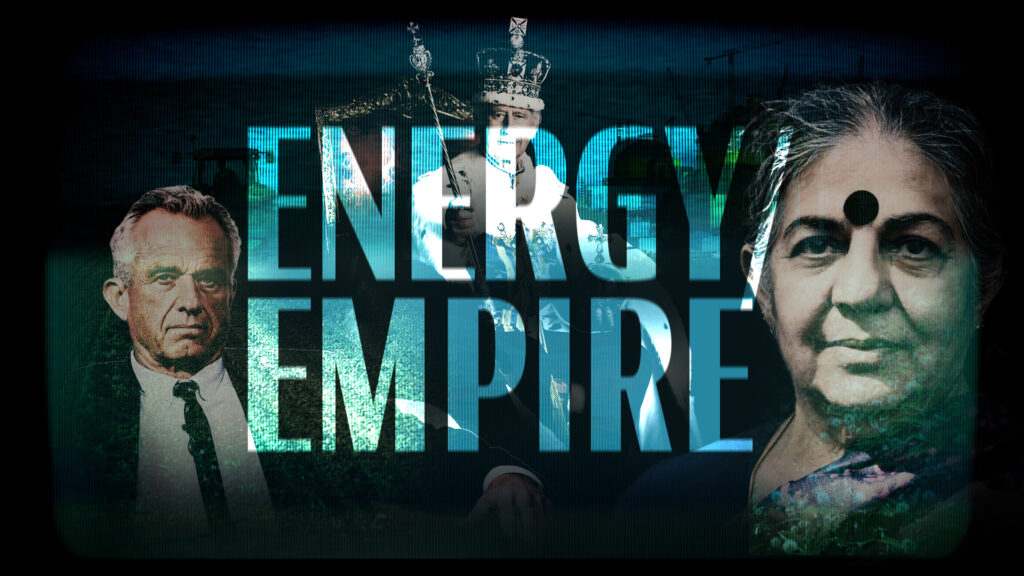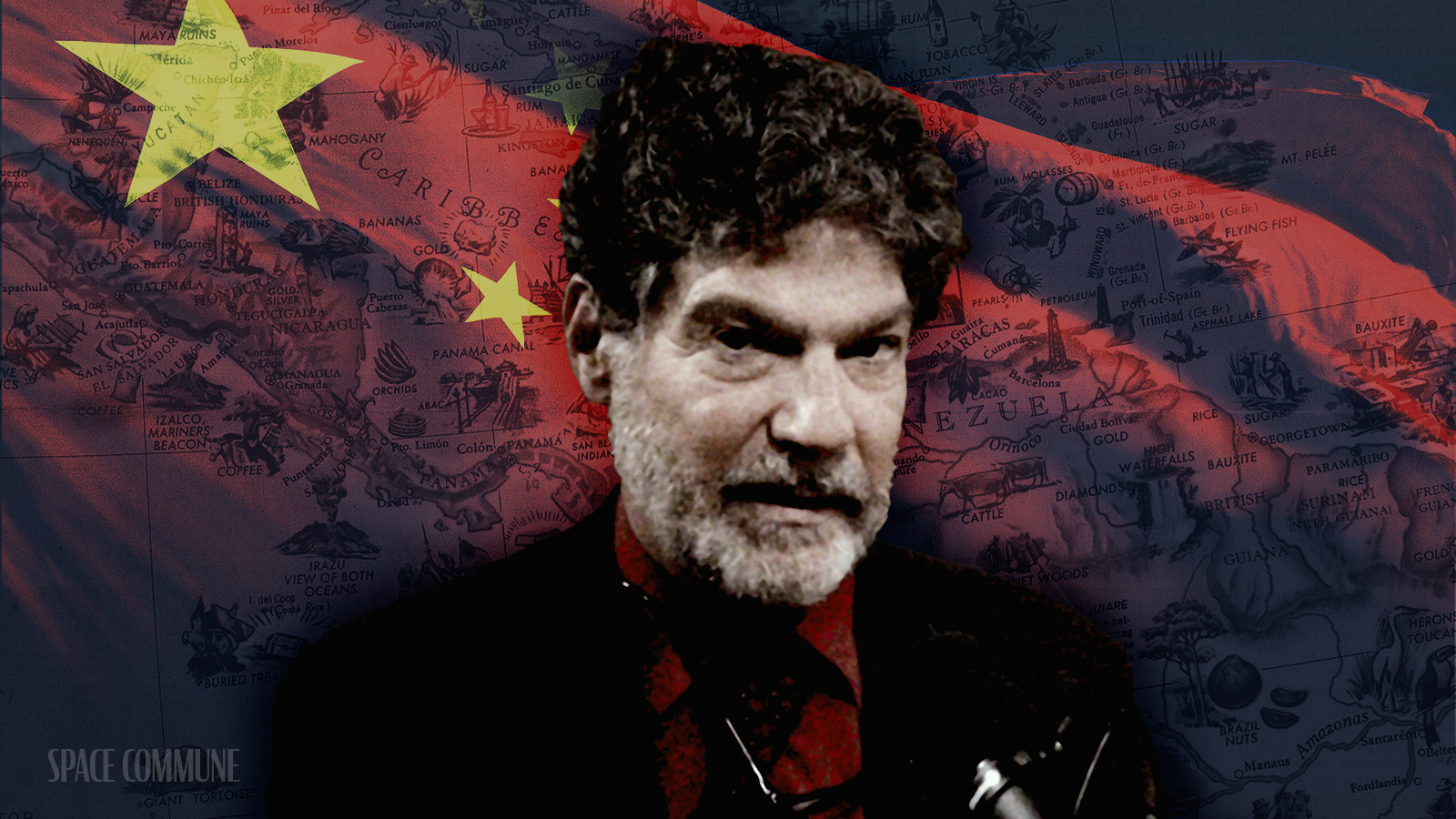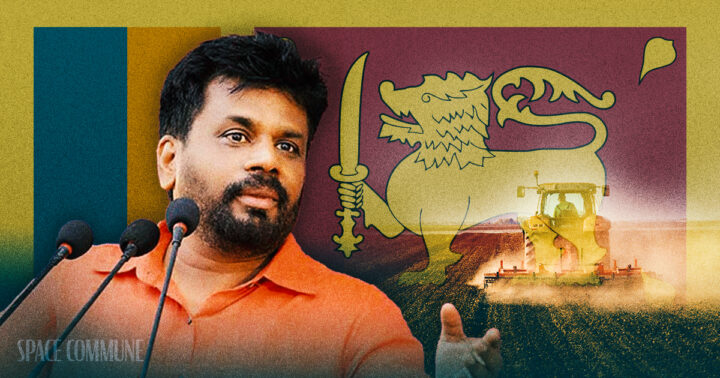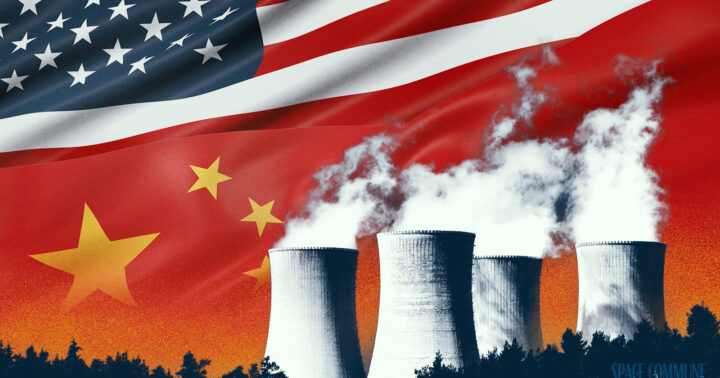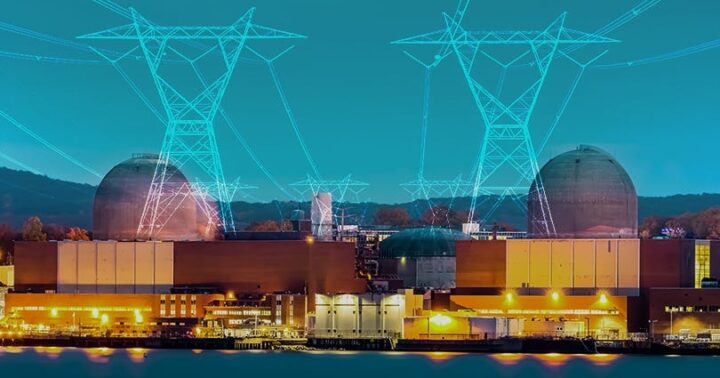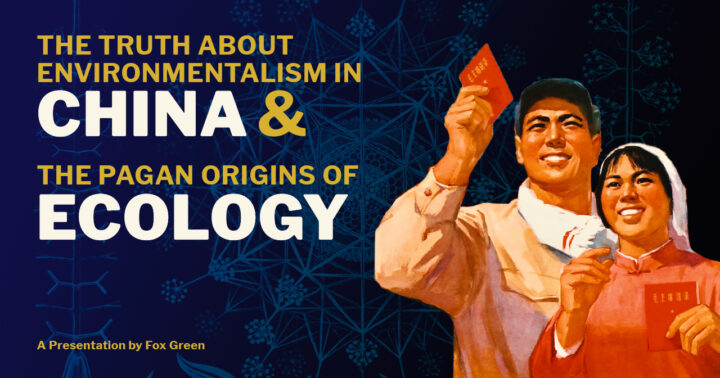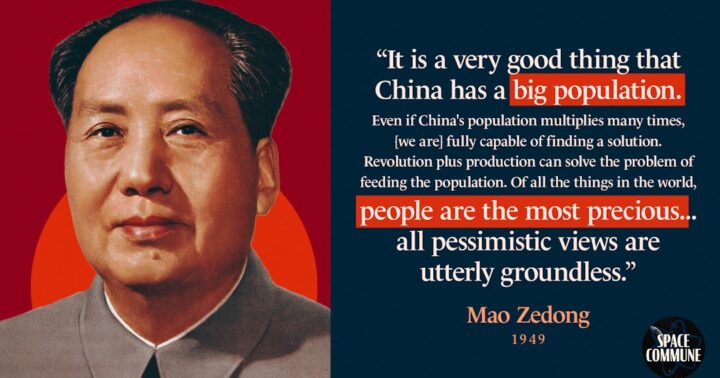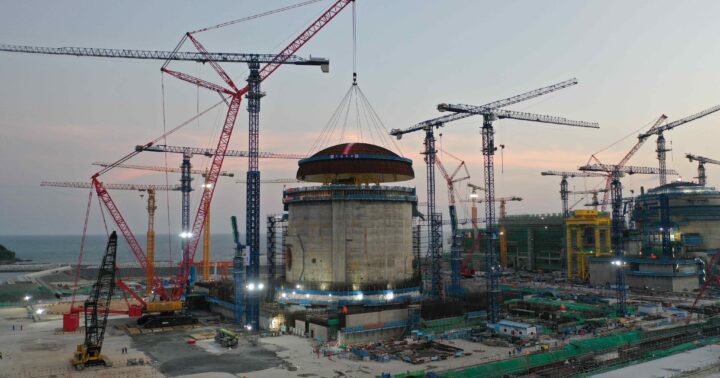Recently, American author and evolutionary biologist Bret Weinstein made waves with startling comments about an alleged Chinese migrant invasion on Tucker Carlson’s podcast and other shows. Weinstein, guided by dissident geopolitics whisperer Michael Yon, had returned from a fact-finding trip to the Darien Gap, a mountainous, heavily forested area on the Isthmus of Panama that is only traversable on foot.
This treacherous expanse, shrouded in secrecy and controlled by the unseen hands of NGOs and cartels, serves as a gateway for hundreds of thousands of migrants bound for the United States. Yet, amidst the chaos and lawlessness, Weinstein and friends have uncovered a truth that chills the blood: mysterious migrant camps funded by unseen forces, Chinese “military-aged” men who didn’t want to talk to him, and a bridge rising like a specter between remote villages, its purpose unknown.
Questions about the US’ border security continue to mount while economic conditions worsen for many Americans. It’s fair to wonder what dark, expensive secrets are hidden on the Darien Gap’s treacherous, 60-mile route through the woods. However, a more devious agenda has become clear: Weinstein, and other influencers like Laura Loomer, Ann Vandersteel, and a gaggle of Epoch Times reporters are being guided through a fog of confusion by Yon to whip up American hysteria against China.
Weinstein’s thesis: the Chinese Communist Party’s former One Child Policy and Belt and Road Initiative are part of a devious, eugenic plot to breed and deploy a fifth column of aggressive, military-aged supersoldiers to the Americas, chopping down beloved forest bioregions, ready to be activated at a moment’s notice by the conniving dictator Xi Jinping. On his Darkhorse podcast with Chris Mortensen, he added that the Chinese soldiers are going to be paid by being allowed to “rape and pillage.”
This argument, a devilish cocktail of eugenics, xenophobia and eco-fascism, obscures common sense about the border crisis: if we joined China in helping South America develop its economy and infrastructure, a lot less people would be migrating here.
What is the real truth?
Like any good con man, Weinstein deviously builds his credibility with things that are true before he twists them beyond recognition. Here are the things that are true:
- Chinese migrant encounters have gone up by gone up 10-fold in the last few years.
- The One Child Policy did help create a 1.2 to 1 male to female gender ratio in China.
- China’s Belt and Road Initiative invests in infrastructure and energy projects in South America.
- Bridges are being built in the undeveloped Darien Gap.
- Migration to the US is being discussed on Chinese social media.
Here are the things that Weinstein leaves out:
- China ranks 16th on the list of migrants to our country, less than 10% of the total migrants, and less than 1% of our total population.
- China’s One Child Policy was forced on them by the West, and their mostly rural population used their Rockefeller-funded access to abortion to have more males to do family farm work. It’s not a weapon for army-building; China is trying to encourage more births because it hurt the country so much.
- Belt and Road projects decrease migration to Western countries by increasing opportunity in developing nations.
- People in the Darien Gap want bridges to increase their economic opportunity and access to services like hospitals, which currently can take 5-6 hours to reach.
- Netizens often mock Chinese migrants to the US on social media platforms like Zhihu.
With this information, Weinstein’s eugenic Malthusian theory becomes utterly groundless: he sees China helping developing countries build their infrastructure and sovereignty and makes it sound like a massive invasion. It’s not; it’s called win-win cooperation, a primary principle of Chinese international relations that will help humanity build out of the zero-sum, Limits to Growth paradigm that the West is currently in.
Why is anti-China sentiment on the rise?
Some elements in the US intelligence and political establishment see their grip on the world slipping, and are stoking irrational fears in segments of the population to justify conflict with China.
That is taking the form of fearmongering about Tik Tok, raising questions about the cheap consumer products on Temu, and now, stoking fears that China is using the One Child Policy to breed an army of supersoldiers and deploying them to the Americas with the Belt and Road Initiative.
You can also see it in Tucker Carlson’s interview with Vladimir Putin, when he spent precious minutes floating anti-China fears to Putin that were rejected by the Russian president.
The next step in building a conflict with China is a revival of a murderous, racist American movement from the 1800s called “The Chinese Must Go.”
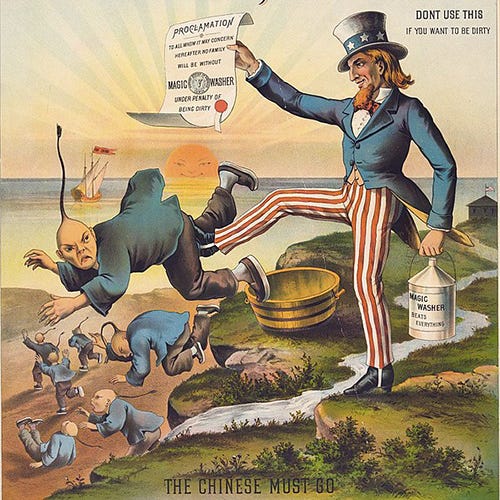
The movement targeted Chinese immigrants who arrived in California in large numbers during the Gold Rush, and who went on to help build the Transcontinental Railroad. A depression set in after the railroad was completed, and low-wage Chinese immigrants were targeted as the scapegoat by organized labor despite making up only 4% of immigrants.
From The Making of Asian America: A History:
“Blaming Chinese workers for unfavorable wages and the scarcity of jobs, labor leaders such as Kearney charged that Chinese workers were imported “coolies” engaged in a new system of slavery that degraded American labor. Chinese immigrants’ purported diet of “rice and rats” was cited as a clear sign that they had a lower standard of living, one that white working families could not, and should not, degrade themselves by accepting. Chinese men were also depicted as a sexual threat, preying upon white women.”
After several massacres of Chinese immigrant communities, the Chinese Exclusion Act was passed in 1882, banning all immigration from China. It lasted in some form until it was repealed by President Roosevelt in 1943.
Weinstein, Yon, Loomer, and Carlson are engaged in a revival of “The Chinese Must Go.” Currently, 33 states have laws in progress to ban Chinese investment in American land, but the real fear should be that these myths about a “Chinese invasion” of our borders will be used to justify nuclear war.
How China is Continuing the Pan-American Legacy of Lincoln, McKinley and Roosevelt
By keeping the Darien Gap undeveloped, and opposing Chinese development efforts, the US is making it impossible for Panama’s government to patrol its land and raise their people’s standard of living. Hundreds of thousands of migrants traverse the anarchic Darien Gap in a state of fear, preyed upon by cartels, human traffickers and bandits, reliant on supra-national NGOs for their survival.
China has poured $137B into South American energy and infrastructure projects and is re-developing parts of the Pan-American Highway, breathing life into a vision of continental prosperity and sovereignty that was once proposed by great Americans like Abraham Lincoln and William McKinley.
The Pan-American Railroad was first proposed by Lincoln appointee to the U.S. consulate Hinton Rowan Helper in 1866. At the time, the British Navy was still dominant on the seas around the Americas, while the U.S.’ undeveloped naval capabilities meant that 75% of South American trade was captured by European powers.
Harrison’s legacy from his brief stint as president in 1889 was that he appointed economic nationalist James Blaine Secretary of State, who organized a Pan American Conference. The outcome of the conference, agreed upon by representatives up and down the Americas, was a “survey for a railway line to connect the great commercial cities of the American hemisphere.”
Blaine wrote that “to connect them all and furnish the people of the Southern Continent the means of convenient and comfortable intercourse with their neighbors north of the Isthmus is an undertaking worthy of encouragement and co-operation of this Government.”
As Anton Chaitkin wrote in 2008:
“U.S. Army engineers and other military and civilian personnel, aided by Latin American experts and governmental authorities, mapped out 5,456 miles of new rail lines that were to connect with thousands of miles already in operation in North and South America”
The complete proposal was presented to President McKinley, who was discussing it at the 1901 Pan-American Exposition in Buffalo, NY when he was assassinated. Coincidence or not, Presidents Lincoln, Garfield, Harrison and McKinley all met tragic ends before they could protect the Americas from British influence with railroad development.
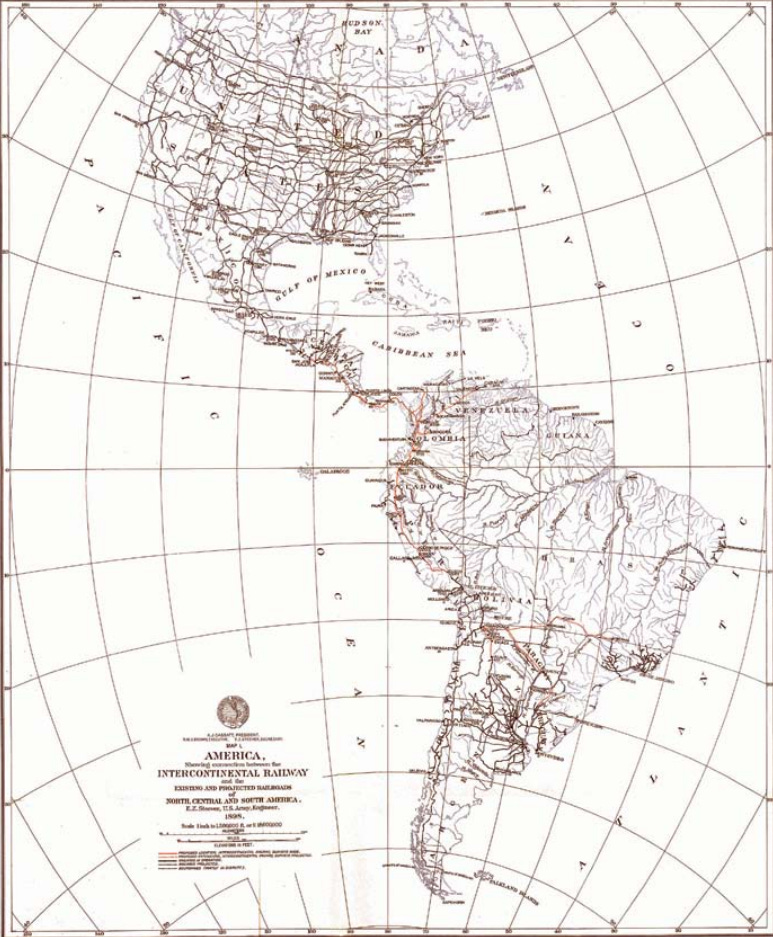
Teddy Roosevelt went on to shelve the project, partially owing to his ideology as a “trust buster” who didn’t believe that the big railroad companies should be undertaking such a project. Steel baron Andrew Carnegie’s protestations that a railroad was a superior program than Roosevelt’s emphasis on the military navy fell on deaf ears:
“Against [Roosevelt’s] big navy programme… let us put the Pan-American Railway, which would cost less money in the next twenty years. . . . If the United States gave the $100,000,000 toward the railway now spent yearly on the navy . . . we should do more to eliminate the element of danger, which at best is small, than we shall with all the warships we can build… The ships are always subject to attack by foes, the railway is immune . . . thus settling this Monroe Doctrine for all time.”
As World War 2 loomed, the Pan-American Highway (not Railway) emerged again as an idea in 1938. President Franklin Roosevelt said at the time:
“The first thing we realize is the fact that any possible attack has been brought infinitely closer than it was five years or twenty years or fifty years ago. … We are therefore studying national defense and continental solidarity against possible attacks from other hemispheres.”
After the events of Pearl Harbor in 1941, Congress quickly authorized $20M for the construction of the Pan-American Highway. They made significant progress, constructing 1,559 miles of new road between Mexico and Panama. After Roosevelt’s untimely death, the U.S. slowly wound down its Good Neighbor Policy, and ran out of funds for the highway in 1951.
The final American push for the highway started in 1955, when Vice President Nixon responded to concerns that Soviet-backed communism was coming to the Americas. He urged Congress to expedite construction, with the U.S. covering 2/3 of the costs. President John F. Kennedy then secured an additional $32M in funding for the highway in 1962. This was the last funding the project ever received from the U.S., and we know what fate befell Kennedy.
From an article by Matthew Wills:
“US President Richard Nixon, for one, really wanted it completed by 1976 “so he could inaugurate it personally, and he had some pretension that the Darién section, if not the Pan-American highway itself, would be named for him.”
But in 1975, a year after Nixon’s resignation, the Sierra Club sued the US Department of Transportation, the primary funder of the project to bridge the Gap. It was a “singular case,” notes Miller, this application of US law to an international setting. The Sierra Club argued that the highway was a environmental disaster for the Gap’s wilderness and the indigenous people living there.”
After the Sierra Club’s attack on Panama’s sovereignty, the funding ran out in 1977, and the U.S. justified the remaining 60 miles of the “Darien Gap” as a natural barrier against migration, geopolitical instability as well as the spread of Foot and Mouth Disease.
In a continuation over the perfidious British meddling in the Americas to prevent a Pan-American alignment, the Darien Gap was enshrined as a “Biodiversity Reserve” in 1983 by Prince Phillip’s World Wildlife Fund and UNESCO. It has received over $22M in conservation funds from the U.S. Government to keep it undeveloped, a far cry from the vision of Lincoln, Garfield, Harrison, McKinley, FDR, JFK and Nixon.
Developing the Darien Gap for Pan-America
For over 150 years, Pan-Americans have yearned for continental connectivity to facilitate trade, development and travel. Completing the Pan-American highway has historically been seen as a move that would increase the security of the American continent.
While Weinstein’s job is to scream that development of roads and railroads in Darien would simply allow the eugenically-bred Mongolian hordes easier access to our border, we must look to the examples across history near and far that Pan-American development, connectivity and infrastructure are good for the US and good for our neighbors to the South.
Paradoxically, it’s China’s Belt and Road Initiative that is continuing this legacy in concrete terms, building airports, roads, bridges and other critical infrastructure to facilitate trade and development in the Americas. They are doing more to end the migrant crisis through development and action than the U.S. is doing by keeping the Darien Gap undeveloped.
In the name of protecting the U.S. border, and increasing the sovereignty and prosperity of South America, could we work alongside China to develop the lawless forests of the Darien Gap and make it a secure, prosperous place for Panamanians? ?
Only through joint efforts and shared vision can we truly address the humanitarian crisis at our doorstep and build a better Pan-America for generations to come.
Alex Dimitrios is a co-founder of Space Commune. Check out and support our upcoming documentary, Energy/Empire, which explores the hidden history behind the oligarchical plot to destabilize and de-industrialize Sri Lanka and Cuba, through meddling with their food production and energy production, respectively.
